#indigenous Americans
Text
I know I don’t have a large following. I know this post will get lost in the sea of other posts. I know I don’t come on here often, and when I do I try to keep my page free from death and other serious topics. Yet, I think this is imperative to say, especially since I myself am of indigenous descent. I ask all of you to join me in solidarity.
Cole Brings Plenty, actor, model, and most importantly activist was found dead. He was assaulted in a club in Lawrence, Kansas. He was killed and his braids; a symbol of his heritage, of his Lakota decent, and a sacred symbol across many an indigenous nation, were forcibly cut.
I beg of thee and I plead with thee, spread the word. Do your part, however big or little, to bring light to this situation. Whether it be by reblogging this post or others alike, or by going out and making a stand. Do it.
Shed light on the situation. This goes beyond the death of one man. It is about the abuse and the destruction of natives and their communities. Of the killing of many an innocent soul. Of the brutalization of many First Nations.
We have seen time and time again, many indigenous people die by similar means. We need to bring light on the deaths of any and all indigenous individuals dead, missing or at risk. It is an epidemic, an assault, and a silent cleansing of many a nation.
Whether it be the estimated 6,000 dead at the hands of Canadian residential schools, the murdered and missing indigenous women and children, or the killing of an actor and activist, you cannot deny the sheer abhorrence of this problem. The problem of many Native American people dying, going missing and being abused, at an alarming rate. At a level unprecedented and unparalleled, at a level of which should not be kept silent.
Cole Brings Plenty, actor, model, activist.
Look at him and spread awareness for him and for many others befallen by the same fate.

Remember him. Remember all of the others. Let nobody else befall the same fate again.
#cole brings plenty#first nations#indigenous#indigenous americans#native american#Canadian residential schools#residential schools#tw death#mmiw#mmiwg2s#please join me in solidarity and spread this word as much as possible#i beg of you#colored text#long post
899 notes
·
View notes
Text
This is a big deal. No, $48,692.05 is in no way, shape or form a fair price for the many thousands of acres of traditional Chinook land that were never ceded but were taken by settlers anyway. However, the fact that this funding from the 1970 Indian Claims Commission settlement is being released to the tribe is the strongest move toward regaining recognition in years.
As a bit of background, the Chinook Indian Nation are some of the descendants of many indigenous communities who have lived in the Columbia-Pacific region and along the Columbia to the modern-day Dalles since time immemorial. They saw the arrival of the Lewis & Clark party to the Pacific Ocean in 1805, but shortly thereafter were devastated by waves of diseases like malaria and smallpox. The survivors signed a treaty to give up most of their land in 1851, but it was never ratified by the United States government. While some Chinookan people are currently part of federally recognized tribes such as the Yakama Nation, the Confederated Tribes of the Warm Springs Reservation, and the Confederated Tribes of the Grand Ronde Reservation, the Chinook Indian Nation--comprised of the Lower Chinook, Clatsop, Cathlamet, Willapa, and Wahkiakum--have remained largely unrecognized.
That changed briefly in 2001. On January 3 of that year, the Department of the Interior under the Clinton administration formally recognized the Chinook Indian Nation. In July 2002, the Bush administration revoked the federal recognition after complaints from the Quinault Indian Nation, as the Chinook would have had access to certain areas of what is now the Quinault reservation. This meant that the Chinook, once again, were denied funding and other resources given to federally recognized tribes, to include crucial healthcare funding during the COVID-19 pandemic.
The Chinook Indian Nation has been fighting legal battles to regain federal recognition ever since the revocation. The funding released to them in this month's court decision doesn't make them federally recognized, but it is a show of legitimacy in a tangled, opaque system that indigenous people across the United States have had to contend with for many decades. Here's hoping this is a crack in the wall keeping the Chinook from recognition, and that they get more good news soon.
#Chinook Indian Nation#Chinook#Chinookan people#indigenous people#indigenous Americans#indigenous rights#landback#federal recognition#Bureau of Indian Affairs#Native American#Native American rights#civil rights#United States
323 notes
·
View notes
Text
An excellent video detailing what fascism is and how to confront it
#us politics#reproductive rights#transrightarehumanrights#activism#internet censorship#blacklivesmatter#net neutrality#human rights#indigenous americans#climate change#lgbtq#i believe in you#power to the people#makethechange
1K notes
·
View notes
Text
#talkin#tik tok#white supremacy#lakota#native americans#indigenous americans#cultural appropriation#standing rock sioux tribe
5K notes
·
View notes
Text
@suite1491 First Nations and Native American Powwow.
"Grass Dance Category in Rapid City! Good Powwow Weekend!"
334 notes
·
View notes
Text



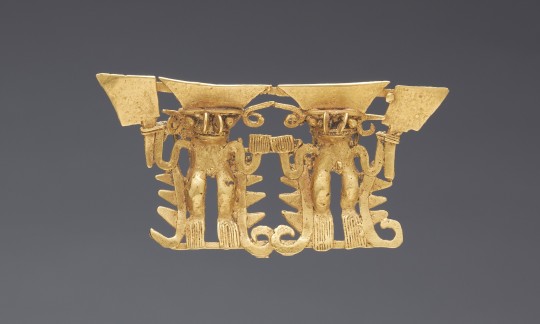

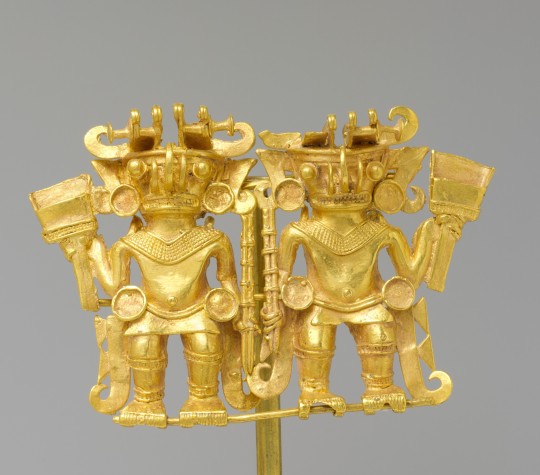
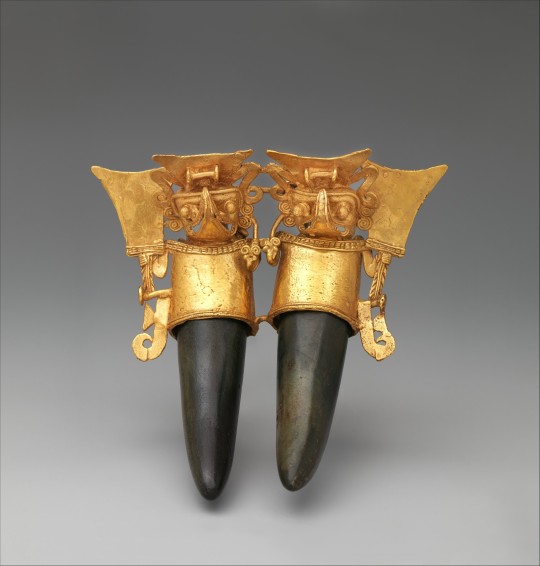
Batman? Never heard of him. Is he anything like these 11th-16th c. humanoid-bat gold figures from what are now Panama and Costa Rica?
These images come from The Metropolitan Museum of Art and The Cleveland Museum of Art, two great collections on JSTOR that are free and open to everyone.
#art of the americas#precolumbian art#indigenous americans#indigenous art#batman#batmen#bats#gold!#jstor
277 notes
·
View notes
Text
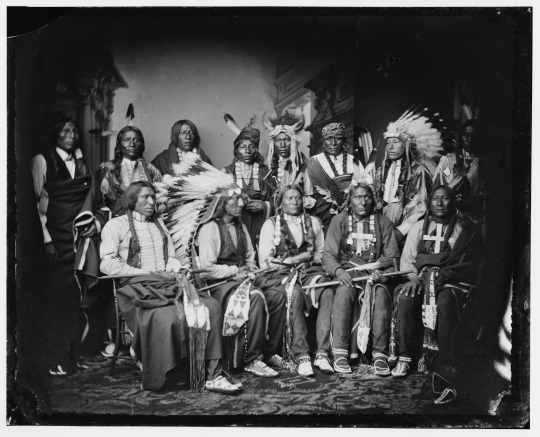
Seated, L to R: Yellow Bear, Red Cloud, Big Road, Little Wound, Black Crow. Standing, L to R: Red Bear, Young Man Afraid of his Horse, Good Voice, Ring Thunder, Iron Crow, White Tail, Young Spotted Tail.
In May 1875, Lakota delegations headed by Red Cloud, Spotted Tail, and Lone Horn traveled to Washington in an attempt to persuade President Grant to honor existing treaties and stem the flow of miners into their lands. The Native Americans met on various occasion with Grant, Secretary of the Interior Delano, and Commissioner of Indian Affairs Smith. He told them on May 27 that Congress was ready to resolve the matter by paying the tribes $25,000 for their land and resettling them into Indian Territory. The delegates refused to sign such a treaty, with Spotted Tail saying about the proposal:
"When I was here before, the President gave me my country, and I put my stake down in a good place, and there I want to stay. … You speak of another country, but it is not my country; it does not concern me, and I want nothing to do with it. I was not born there. … If it is such a good country, you ought to send the white men now in our country there and let us alone."

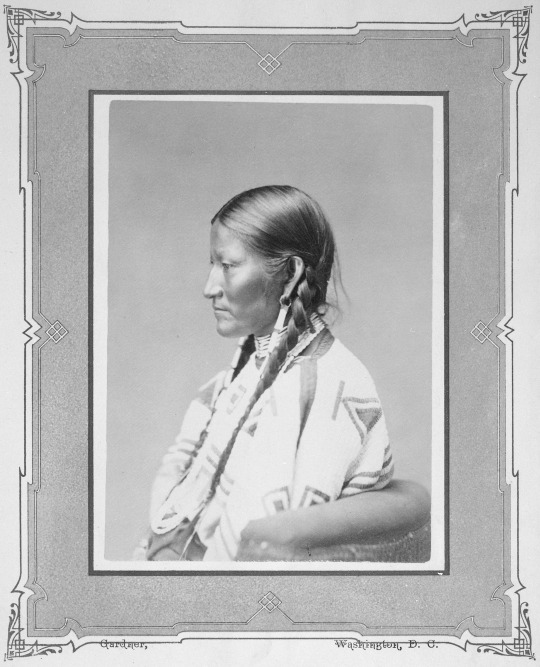
Left: Sintegaleska (Spotted Tail), Sichangu Dakota Chief Right: His wife "Julia Black Lodge"
#spotted tail#julia black lodge#indigenous americans#indigenous#native americans#yellow bear#chief red cloud#black crow#young spotted tail#ring thunder#iron crow#good voice#young man afraid of his horse
106 notes
·
View notes
Text

Four American Indians, dressed in traditional clothing, appear before the Second Circuit Court of Appeals, October 20, 1941. They argued that the Selective Service Act violated their liberty and a treaty between the Indians of the Six Nations. Judge Thomas W. Swan reserved decision. From left to right are: Clinton Rickard, Tuscarora chief; Jess Lyons, Onondaga chief; Harry Patterson, Tuscarora brave and Ivan Burnham, Mohawk brave. The other nations are the Oneida, the Cayuga, and the Seneca.
Photo: MC for the Associated Press
#vintage New York#1940s#Six Nations#Native Americans#indigenous Americans#American Indians#Tuscarora#Onondaga#Mohawk#Oneida#Cayuga#Seneca#October 20#Oct. 20#20 Oct.#20 October#Selective Service Act
84 notes
·
View notes
Text
"Indigenous Americans" at STRAAT Gallery.




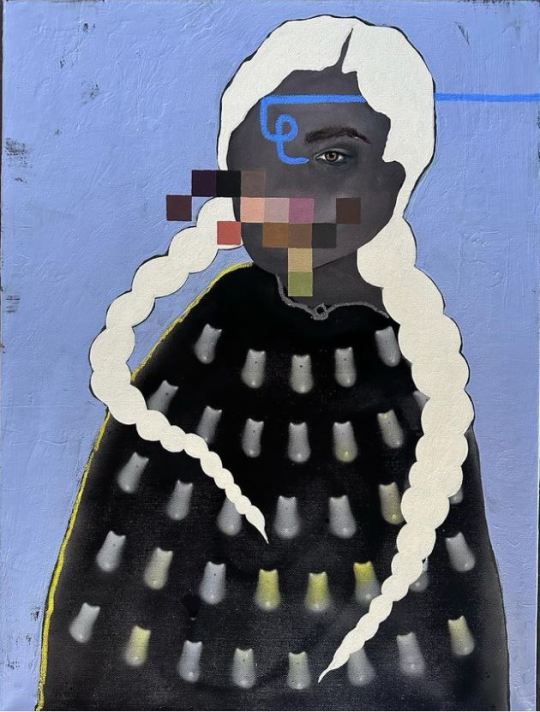

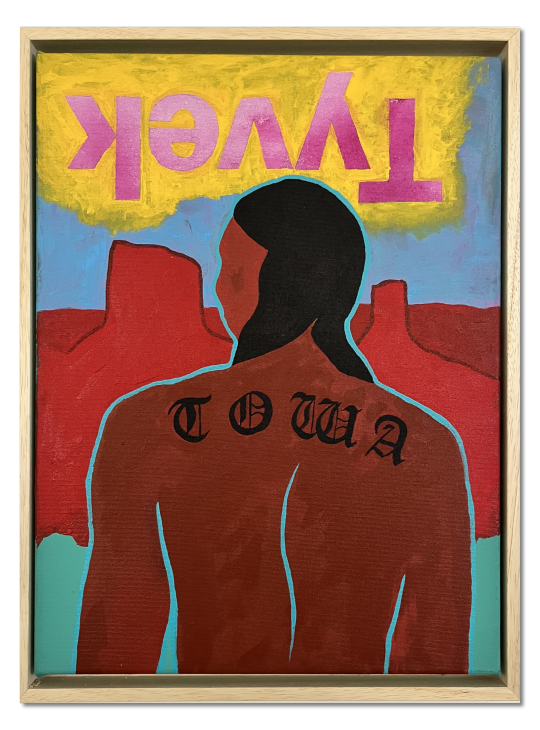

Currently on view at the STRAAT Museum and gallery in Amsterdam, Netherlands is the group exhibition, "Indigenous Americans: Post Colonial Expressions." This exceptional exhibition features the work of four eminent contemporary artists of Native American heritage, including Jaque Fragua, Danielle SeeWalker, Kaplan Bunce, and Anthony Garcia Sr.
In line with the institution's enduring commitment to familiarizing the public with the multifarious dimensions of global street art and graffiti culture, this exhibition pays tribute to a less-recognized subculture therein. "Indigenous Americans: Post Colonial Expressions" addresses the unifying spirit that pervades a culturally diverse society, while also highlighting the deep-seated historical connections of Indigenous artists and their continued engagement with public space painting.
Kaplan Bunce, one of the participating artists, has remarked, "To me, the contemporary urban art landscape resembles a fusion of culture-rich exchanges of artistic practices from around the world. I perceive unity within the community, and by perpetually embracing my Indigenous identity in these spaces, I am forging ahead on a path created by those who have left their marks on walls since time immemorial."
The exhibition is on view until June 11th, 2023.

THE SUPERSONIC ART SHOP | FOLLOW ON INSTAGRAM
#art#painting#indigenous americans#native american#native american art#fine art#contemporary art#straat museum#kaplan bunce
172 notes
·
View notes
Link

Which Indigenous lands are you on? This map will show you.
670 notes
·
View notes
Text
On September 6th, we venerate Ancestor Tašhúŋka Witkó aka "Crazy Horse" on the 146th anniversary of his passing 🕊
[for our Hoodoos of First Nations descent]

Crazy Horse was the legendary Oglala Lakota Warrior who spearheaded the war against invading colonizers sweeping the land & recognized as a great leader committed to preserving the traditions and values of the Lakota ways of life.
Tašhúŋka Witkó was born into war; at a time when the European colonizer threat was growing, encroaching on sacred land & driving friction between Indian communities. Even as a boy, the warrior spirit was strong in him. He raided horses from Crow Nation at age 13. Once he came of age, he took up initiation through Vision Questing. Tašhúŋka Witkó fasted alone in the wilderness for four days and nights seeking guidance from Great Spirit. What he received from this monumental moment would chart his course through life as the greatest warrior his People had ever known. He earned his reputation among the Lakota, not only by skill, but also by his fierce determination to preserve the traditions of his people. He was known for refusing to be photographed, leading with the traditional belief that by doing so would capture an essence of his soul.
By his mid-teens, Tašhúŋka Witkó (by then Crazy Horse) was already a full-fledged warrior; known for his staggering bravery and prowess on the battlefield. He rode into battle with a hawk feather in his hair, a rock behind his ear, & a lightning bolt slashed across his face. The ancestral mysticism and rituals that went into preparing him for battle is what blessed him with the power & protection to succeed.
He led his first war party in Oglala Chief Red Cloud's war against the European colonizers invading lands Wyoming from 1865-1868. He met U.S. forces in open battle for the first time in 1876 after he became a resistance leader against the Lakota being forced onto reservations. He led a band of Lakota Warriors alongside Sitting Bull, the Cheynne, & other neighboring Tribes in counterattack in the Battle of Little Bighorn against Custer’s 7th U.S. Cavalry Battalion. Custer, 9 of his officers, & 280 soldiers, all lay dead in his wake. From then on, the U.S. Gov. targeted the Northern Plains tribes who resisted its encroachment. After a year of forcing the displacement of many Indigenous communities, slaughtering the Buffalo population, and driving their starvation into surrender, eventually the same fate fell upon the Olglala Band of Lakota Nation. In 1877, under a truce flag, Crazy Horse traveled to Fort Robinson to negotiate terms of mutual surrender.
Negotiations with U.S. Military leaders broke down, allegedly as a result of the translator's incorrectly translationof what Crazy Horse said, which spurred them to quickly imprison Crazy Horse. Once he realized their scheme, Crazy Horse broke free & drew his knife. A infantry guard made a successful lunge with a bayonet and mortally wounded him. Crazy Horse succumbed to his wound shortly thereafter once it became infected. After his death, his parents buried him at an undisclosed location near Wounded Knee, South Dakota. There he rests among with the Ancestors he venerate so deeply.
"[ “Where are your lands now?”] “My lands are where my dead lie buried.” - Crazy Horse's response to a U.S. Cavalry man's taunts at the Battle of Little Big Horn.
We pour libations & give him💐 today as we celebrate him for his unbridled warrior spirit, his leadership, prowess, & for being a beacon of light leading all Indigenous American descendants back to our traditional ways of life.
Offering suggestions: prayers toward his elevation, libations of water, offerings of tobacco, & Oglala Lakota songs/prayers
‼️Note: offering suggestions are just that & strictly for veneration purposes only. Never attempt to conjure up any spirit or entity without proper divination/Mediumship counsel.‼️
#hoodoo#hoodoos#atr#atrs#the hoodoo calendar#Crazy Horse#Tašhúŋka Witkó#lakota nation#oglala band#oglala lakota#land back#ancestor elevation#first nations#american indian#black indigenous#indigenous americans
59 notes
·
View notes
Text
You can also email the representatives in your state calling on them to release a statement condemning the Tennessee house speaker for refusing to allow elected representatives serve their constituents. Honestly I would recommend doing the same thing, sending a letter to your reps and to the president, for Flordia right now. DeSantis has violated the constitution enough times that letter should be thick.
Update: Unfortunately Justin Jones and Justin J. Pearson have been expelled as of a day ago. They are still dedicated to fighting this fascist government and I fully believe these wonderful people are going to bring about great change!
Another update: Justin Jones has been reinstated!
Update: Justin J. Pearson has also been reinstated!!!! HUGE win for democracy! These guys are going to make waves. 👏👏👏👏👏
#activism#internet censorship#net neutrality#reproductive rights#transrightarehumanrights#us politics#blacklivesmatter#indigenous americans#fascisim#power to the people#lgbtq#lgbtq pride#wethepeople#gun control#climate change
589 notes
·
View notes
Text
747 notes
·
View notes
Text
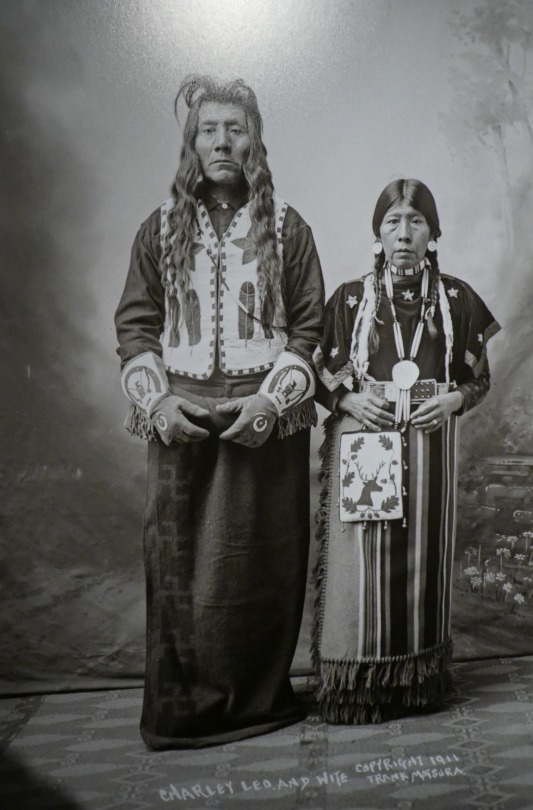
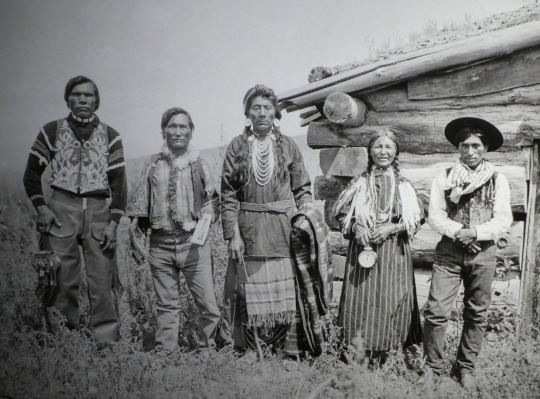




Sakae Matsura (Japanese, 1873 - 1913), Okanagan Families on the Colville Reservation, Washington State.
"An exhibition in the Northwest Museum of Arts and Culture (MAC) in Spokane, Washington, Portraits from the Borderlands, features photographs of Okanagan men taken by Frank Sakae Matsura (1873-1913). Matsura came to Washington from Japan about 1901."
41 notes
·
View notes
Text
How would you rank these animated films involving Indigenous Americans?




You can do it however you see fit (representation, story, music, etc.) I have nit picks and thigns I like with all of them:
"Pocahontas": great music, animation, themes, and characters, but the historical parallel holds it back from being as iconic as other Disney projects. 7/10
"The Emperor's New Groove": very funny with great characters, but not the epic scope of typical Disney films--plus the setting/culture is more of a backdrop, as it feels more modern than medieval. I'll always wish we got "Kingdom of the Sun." 6/10
"The Road to El Dorado": Great characters and animation, but I do wish that the trio and the villain were more fleshed-out--figuratively, not literally--so we could better understand their pasts and motivations. 5/10
"Brother Bear": I love the brotherly story, but I don't really like animal-centric films (except Zootopia). Had it been a musical and focused on the brothers as humans, I'd probably love it. 3/10
So my ranking from best to worst is pretty much the picture above; just go clockwise from left to right.
#disney#disney animation#dreamworks#dreamworks animation#pocahontas#the road to el dorado#the emperor's new groove#brother bear#native americans#indigenous americans#maya#powhatan#inca#inuit
65 notes
·
View notes
Text
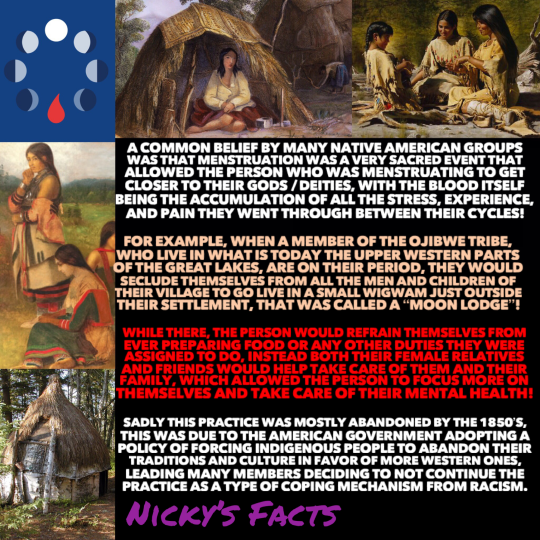
By providing the proper care for women and those who menstruate, whether it traditional or modern, empower them with the confidence and support that they need!
🩸
#history#menstruation#ojibwe#moon lodge#mental health#indigenous history#great lakes#period health#united states#native american#women empowerment#femininity#menstruation history#people who menstruate#womens health#menstrual care#womens history#indigenous americans#traditional practices#period cramps#american history#indigenous culture#menstrual health#menstrual cycle#native american history#nickys facts
17 notes
·
View notes